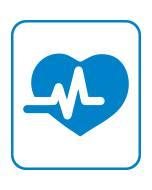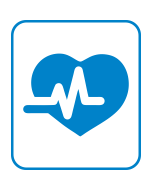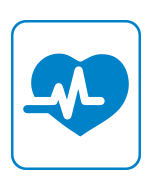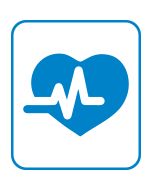Growth Opportunities in Drug Discovery and Early Development Outsourcing Services
Growth Opportunities in Drug Discovery and Early Development Outsourcing Services
M&As, Partnerships, and the Shift Toward an End-to-end CRDMO Model will Boost Sector Expansion
20-Feb-2024
North America
Market Research
Description
The global pharmaceutical research and development (R&D) pipeline accounts for more than 21,000 molecules, as of April 2023, indicating a 5.8% hike over 2022, with more than 6,100 molecules in active development. In general, however, the pharma/biopharma industry has stagnated with respect to R&D activity. Overall R&D expenditure totals about $276.81 billion, with slow 2.5% growth between 2023 to 2024. Decline in the year-on-year growth rate is the result of a shift in focus from COVID-19 therapies to more mainstream therapies across oncology, neurology, respiratory, and many more conditions, which is resulting in overall market normalization with respect to growth rates. Furthermore, the industry witnessed a decline in the average return on investment (ROI) for R&D to as low as 1.2%, and the peak sales per asset valued just above $350 million, indicating a need to build more efficient drug development processes with the implementation of newer technologies.
Of total R&D expenditure, the top 10 pharma companies accounted for just 4% to 5% of the pipeline, while the top 25 contributed to less than 10%. In contrast, small-to-mid segment and emerging biopharma players (companies with 1 or 2 molecules in the pipeline) are the major contributors, accounting for more than 16% of the active pipeline. As a result, the demand for outsourcing activities is on the rise globally, with contract research organizations (CROs) and contract development and manufacturing organizations (CDMOs) contributing to the strong industry growth.
Moreover, advancements in multiple emerging biotechnology platforms (e.g., RNA technology, protein degradation [PROTAC], and antibody engineering technologies) coupled with the application of digital health technologies in the form of artificial intelligence (AI) and machine learning are supporting unprecedented innovation, ascertaining increased success of a molecule. This activity is improving the partnership landscape across the global drug discovery and preclinical development industry.
Overall, the sector is witnessing an emergence of specialized lab testing and bioanalytical CROs. With techniques such as next-generation sequencing (NGS), high throughput screening (HTS), and many more crucial to drug development, a steady rise in CRO and central lab partnerships is underway. To add to this, several specialized bioinformatics CROs are emerging and creating greater partnership opportunities. Last, the larger CROs have developed separate lab testing divisions that allow them to focus on specific drug discovery and preclinical development testing services.
Moving forward, CROs/CDMOs will likely focus on targeted scale up of preclinical capabilities through cross-industry partnerships and academic partnerships, ascertaining knowledge transfer to pharma companies through out-licensing opportunities, thereby supporting greater innovation while transitioning from a vendor-ship to partnership model.
Author: Aarti Siddhesh Chitale
Table of Contents
Why is it Increasingly Difficult to Grow?
The Strategic Imperative 8™
The Impact of the Top 3 Strategic Imperatives on the Drug Discovery and Early Development Outsourcing Industry
Growth Opportunities Fuel the Growth Pipeline Engine™
Scope of Analysis
Phases of Drug Discovery and Early Development
Market Segmentation
Key Competitors by Region
Key Competitors by Type of Service
Drug Discovery and Early Development Services
Key Industry Trend Analysis
Digitization of the Drug Development Value Chain
Computer-aided Drug Discovery and Preclinical Research
Growth Metrics
Growth Drivers
Growth Restraints
Drug Discovery and Preclinical Development—Evolving Vendor Ecosystem
Drug Discovery and Preclinical Development—Evolving Vendor Ecosystem (continued)
Drug Discovery and Preclinical Development—Evolving Vendor Ecosystem (continued)
Drug Discovery and Preclinical Development—Evolving Vendor Ecosystem (continued)
CRDMOs—The New Go-to Partners for Pharma Innovation
Academia—Bridging the Research Gap in Pharma Innovation
Evolution of Academic Research
CROs Paving Way for Efficient Technology Transfer
Investment Trends
Early-stage CRO/CDMO Service Collaboration—Nonclinical
Early-stage CRO/CDMO Service Collaboration—Nonclinical (continued)
Early-stage CRO/CDMO Service Collaboration—Nonclinical (continued)
Early-stage CRO/CDMO Service Collaboration—Nonclinical (continued)
Early-stage CRO/CDMO Service Collaboration—Nonclinical (continued)
Early-stage CRO/CDMO Service Collaboration—Nonclinical (continued)
Expanding Non-clinical Expertise through Industry Acquisitions
Expanding Non-clinical Expertise through Industry Acquisitions (continued)
Expanding Non-clinical Expertise through Industry Acquisitions (continued)
Scale Up through Funding and In-house Investments
Scale Up through Funding and In-house Investments (continued)
Scale Up through Funding and In-house Investments (continued)
Scale Up through Funding and In-house Investments (continued)
Pharma R&D Expenditure
Pharmaceutical R&D Landscape
Pharmaceutical R&D Landscape (continued)
R&D Mapping by Therapy Area and Stakeholder Type
R&D Pipeline Assessment by Therapy Area and Stakeholder Type
R&D Pipeline Assessment by Therapy Area and Stakeholder Type (continued)
Nuances of Drug Discovery and Preclinical Development
Revenue Forecast Assumptions and Methodology
Revenue Forecast
Revenue Forecast by Phase of Development
Revenue Forecast Analysis
Revenue Forecast Analysis (continued)
Revenue Forecast by Region
Percent Revenue Share by Region
Revenue Forecast Analysis by Region
Revenue Forecast Analysis by Region (continued)
Competitive Environment
Revenue Share by Type of Service Vendor
Revenue Share Analysis—CRO
Revenue Share Analysis—CDMO
Competitor Landscape by Type of Non-clinical Service
Competitor Landscape—CRDMOs
Competitor Landscape—CROs
Competitor Landscape—CDMOs
Competitor Assessment
Competitor Assessment (continued)
Growth Opportunity 1: Next Generation Sequencing (NGS) and Bioinformatics Capabilities
Growth Opportunity 1: Next Generation Sequencing (NGS) and Bioinformatics Capabilities (continued)
Growth Opportunity 2: Regulatory Consulting and IND-enabling Studies
Growth Opportunity 2: Regulatory Consulting and IND-enabling Studies (continued)
Growth Opportunity 3: De Novo Drug Design and Disease Modeling with Generative AI
Growth Opportunity 3: De Novo Drug Design and Disease Modeling with Generative AI (continued)
Your Next Steps
Why Frost, Why Now?
List of Exhibits
Legal Disclaimer
Growth dialog™
A tailored session with you where we identify the:- Strategic Imperatives
- Growth Opportunities
- Best Practices
- Companies to Action
Impacting your company's future growth potential.
| Deliverable Type | Market Research |
|---|---|
| Author | Aarti Siddhesh Chitale |
| Industries | Healthcare |
| No Index | No |
| Is Prebook | No |
| Keyword 1 | Early Development Outsourcing Solutions |
| Keyword 2 | Technology Innovations in Drug Discovery |
| Keyword 3 | Drug Discovery Outsourcing Industry Insights |
| Podcast | No |
| WIP Number | PFA5-01-00-00-00 |



